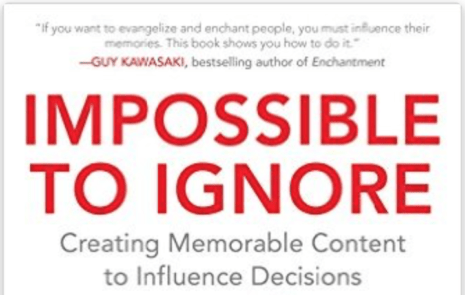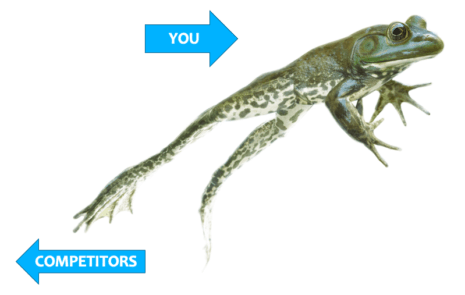
How Does A B2B Company Start Content Marketing?
Start where you are. Adopt the right mindset: See the world through the eyes of buyers.
Each company has different assets and strengths that can fold into content marketing. Build on those strengths, rather than starting over again.
First, collect insights on buyer personas. Collect the best information about your buyers, prospects and customers. Work with sales, distributors and marketing research.
Gather input directly from customers at trade shows and events, and in social media. Take time to listen to customers while you’re working on a customer news release, video or case history. In particular, learn the questions buyers are asking, who has a say in the decision and who makes the final call.
What are technical buyers thinking as they consider your product and competitors’? How about economic buyers? Do green buyers get a say? Who makes the buying decision, and who has input to it?
Then, work to understand the buyers’ journey. In carefully considered, high-value BtoB purchasing, buyers take 4 distinct steps. At each step, buyers have different questions, seek different kinds of information, and prefer different media. See more on the B2B buyers’ journey here.
Inventory the assets you have that can be repurposed for content marketing, such as:
- Marketing collateral
- Web pages
- Case histories
- Videos
- White papers
- Social media
- Newsletters or magazines
- Trade shows and events
- Lists of customer questions (from sales and service)
- Subject-matter experts (to blog and post)
- Heavy social media users (who can become ambassadors for your content).
In the process of a content inventory, most B2B companies find that their marketing focuses on the company and its products, but not on buyers’ needs. It’s a common failing, found in 80% of B2B websites by Forrester Research.
So you’ll need to refashion existing assets into content that sees the world through the eyes of buyers and customers. Don’t underestimate the size of this job. You may need to rewrite virtually everything. To do so, you need an empowered content editor or director.
Your editor needs to develop a written content marketing strategy. Sad to say, even though most companies employ content marketing today, most companies lack written strategies. The Content Marketing Institute’s recent surveys showed:
- Only 35% of B2B marketers have a written content marketing strategy.
- Only 27% of B2C marketers have a written content strategy.
You just can’t do content well without a written strategy. It’s like trying to drive across the country with no map.
Do you homework to formulate a strategy. But boil your content marketing plan down to one page. That makes it easier to gain buy-in and approval from clients and executives. Here’s a free template for your 1-page content marketing strategy. If you’re getting a lot of resistance, propose a “pilot plan” for content marketing.
A 1-page plan is living and dynamic. It’s unlike a binder-length plan that gets parked on a shelf after it’s approved. Revise the plan as needed – quarterly, or as events dictate. Hang the plan above your computer to keep your content marketing tracking the strategy.
Work with product marketing, R&D and sales to develop a 1-page Message Map.
A message map provides an abundance of topics to discuss in content marketing. All these topics are predefined as “in bounds.” It saves you lots of time to write from an approved message map, compared with needing to get separate approvals for each new idea or piece of content.
Create an editorial calendar to guide when you will publish. Content works best when buyers know they can expect a regular cadence. For example, schedule a blog that publishes on Tuesdays and Thursdays.
At a minimum, your calendar needs to include topic, medium, deadline, status, and responsibility. The calendar should show when you publish in owned, earned, social and paid media.
Build up a backlog of content so you have time to do it well, rather than rushing to always meet last-minute deadlines.
Your content marketing team needs to have the right skills, or you’ll need some help from outside. A minimum viable skill set includes storytelling, writing, editing, interviewing, design, photos/videos, digital, analytics and demand generation.
Your team needs the right tools, including marketing automation to tie together email, landing pages and websites and help you qualify leads. You need analytics such as Google Analytics, to see how people are using your website. Analyze your email performance too, looking for bright spots to see what’s working. See more on skills and tools in my presentation to Content Marketing World here.
This approach – buyer personas, content inventory, strategy, message map, calendar, skills and tools – will get your content marketing started off on the right foot. Most compelling to your execs are results that show how content marketing contributes to the business, especially:
- marketing-qualified leads
- sales-accepted leads
- sales pipeline
- customer wins
- revenue
- profits.
This question came up at my Content Marketing Institute presentation on How to Speed the Journey from Content to Cash. Other questions in this series include:
- How can a content marketing flying solo make the biggest impact with limited resources?
- How does a B2B company start content marketing?
- How to deliver consistent content marketing messages to all buyer personas?
- How to keep content marketing always on message?
- How to link specific content marketing activities to sales?
- How to speed the buyers’ journey to a purchase?
- How to help buyers take the first step in the buying journey?
- How to measure meaningful web traffic and give content marketing the credit for it?
- What content marketing appeals to customers? What brings them back?
Contact Us
Related Posts
Content Marketing World: Speed the Journey from Content to Cash
“Speeding the Journey from Content to Cash” was my talk at Content Marketing World 2014. Thanks to the CMW team for putting on a...
5 Ways to Guide Customers with Content Marketing
Through content marketing, you can build 4 kinds of relationships with customers – guru, guide, partner or helper. Here are 5 ideas for how to create “guide” content...
How Neuroscience Boosts Marketing Results
Ask marketers what we do. We answer that we increase customers’ awareness of products, stoke their interest and desire, and prompt them to buy....
Top blog topics of 2020 included content marketing in pandemic times
The top blog topics of 2020 included content marketing in pandemic times. Our top 20 blogs in 2020 offered guidance on how to: Do...





